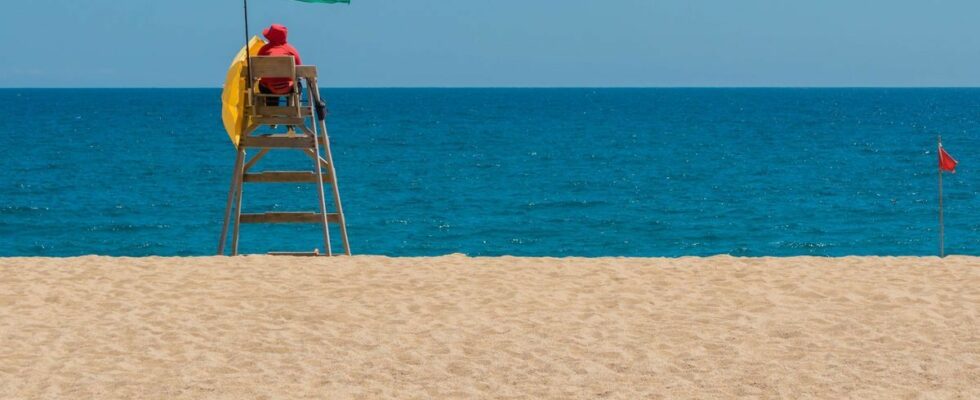Published on
updated on
Reading 2 min.
While heat waves often correspond to peaks in drowning, the Spanish authorities are experimenting in Catalonia with an automatic system based on the principle of traffic lights to warn of bathing conditions on unsupervised beaches.
Hoist the right flag high! It’s true that this is a reflex to have before going swimming. The color indicates whether it is allowed to take a dip, otherwise to remain vigilant in case of rough tides. As thesea rescue association (SNSM), the flag can be hoisted outside of surveillance hours or when a lifeguard must be absent. It should be remembered that since the publication of a decree in January 2022, the signage of bathing areas and conditions has been harmonized according to international standards. Thus, it is no longer a flame but a flag that is hung on the coasts.
- Green means safe swimming (provided you know how to swim);
- Yellow or orange indicates that swimming is supervised but that there may be danger;
- In case of a red flag, it is forbidden to enter the water;
- While purple indicates water pollution or the presence of dangerous aquatic species such as jellyfish.
In Catalonia, an experiment has just been launched to automatically adapt signaling according to marine conditions. According to the portal TheMayor.euthe civil protection of the Spanish region acclaimed every summer by thousands of bathers wants to set up a system of traffic lights that would work with the same color codes as those of the flags. For the moment, the test is only taking place in three municipalities, namely Cambrils, Roses and Mataro.
Sensors have been placed on the water buoys to send data in real time to the authorities. The system is currently being tested on supervised beaches to ensure the reliability of the measurements, which are compared with those taken by lifeguards. If the experiment is conclusive, traffic lights will appear on unsupervised Catalan beaches from next September.
This is of course a project to prevent drownings. In France, in the summer of 2023, more than 1,300 drownings were recorded. According to Santé Publique France, nearly 30% resulted in death. Remember that drowning is the leading cause of death by accident in everyday life among people under 25. It should be noted that peaks in drowning generally correspond to heat waves. Finally, the sea is the place where drowning most often results in death (45%), ahead of rivers (23%), private swimming pools (15%) and bodies of water (14%).
